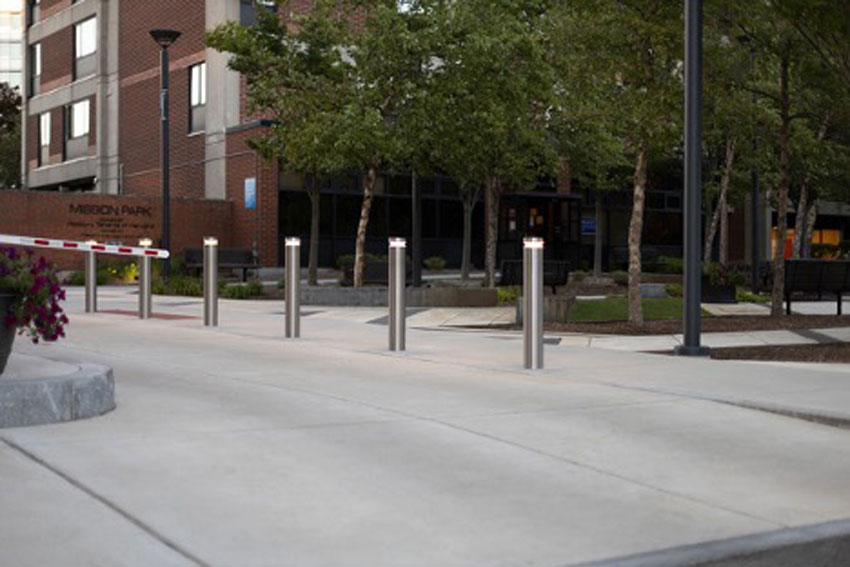Designed to Protect
ASTM F3016
Under ASTM F3016, “Standard Test Method for Surrogate Testing of Vehicle Impact Protective Devices at Low Speeds,” the target of this standard is to defend assets against damage on the protected side. This test method provides a range of impact speeds to be used with a 5000-lb. surrogate test vehicle. The standard establishes a range for penetration performance ratings.
Standard vehicle conditions under ASTM F3016; Small Passenger Car, 5,000 lbs.
Standard speeds (S): range from 10 miles per hour (mph) to 30 mph.
Based on the size of the vehicle and its speed, the generated impact conditions are also assigned a dynamic penetration rating (P):
- P1 ≤ .30 meters (≤1 ft)
- P2 ≤ 0.31 – 1.22 meters (1–4 ft)
- Failure ≥ 1.23 meters (≥ 4 ft)
ASTM F3016 can be applied to a broader range of security level options for projects. Security needs assessed under these criteria cover more standard incidents, such as a distracted driver taking their foot off the gas and rolling into the storefront.
International Testing Standards
While ASTM ratings are the most broadly specified ratings that a designer will come across, the method of certification may vary depending on the location of the planned installation. The International Organization for Standardization (ISO) also has a standard for measuring security bollard performance, IWA 14, the target of which is to guard against building penetration. IWA 14 specifies the essential impact performance requirement for a vehicle security barrier (VSB) and a test method for rating its performance when subjected to a single impact by a test vehicle not driven by a human being. It also includes the following optional assessments that can be carried out as part of the vehicle impact test method: pedestrian intruder access; and occupant injury. Much like the previously discussed standards, the ISO standards are tested on the basis of the security barrier’s application, including: vehicle type, mass and speed of the assessed vehicle-borne threat; its geographical application, for example, climate conditions; and, intended site conditions, such as rigid or non-rigid soil. IWA 14 can be compared with ASTM F2656, so that a bollard earning a M50-P1 rating under ASTM F2656 can earn a Bollard V/7200[N2G]/80/90:1.0 rating from the ISO. The ratings which collaborate include the following:
- M50-P1 = Bollard V/7200[N2G]/80/90:1.0
- M40-P1 = Bollard V/7200[N2G]/64/90:1.0
- M30-P1 = Bollard V/7200[N2G]/48/90:1.0
Security bollards in the United Kingdom (UK) are tested under BSI (British Standards Institute) PAS 68:2013. Testing under BSI follows different criteria, so that direct correlations between domestic ratings and BSI are not possible.
While all these standards define test methods and performance ratings for vehicle security barriers, there are some key differences.










